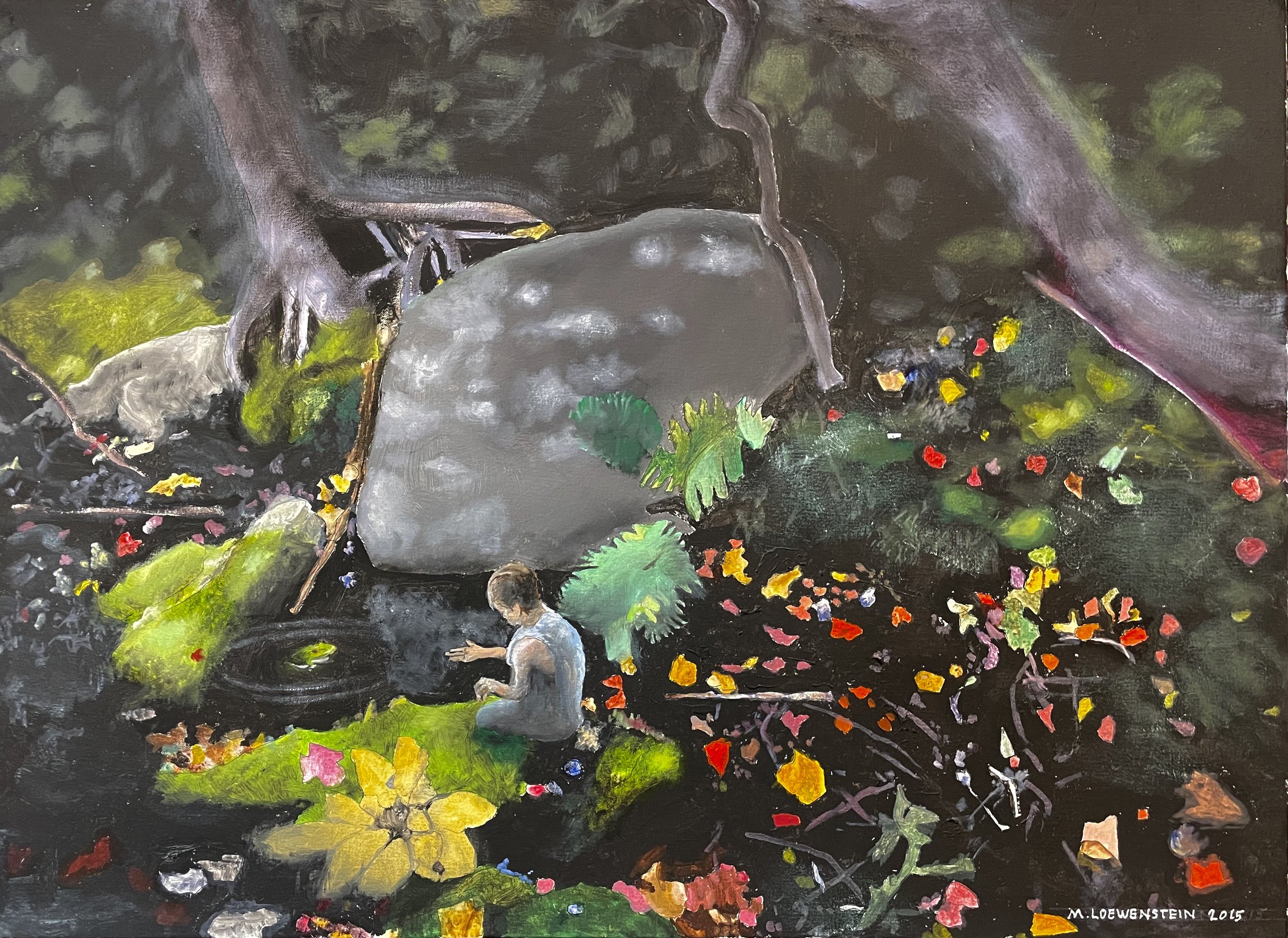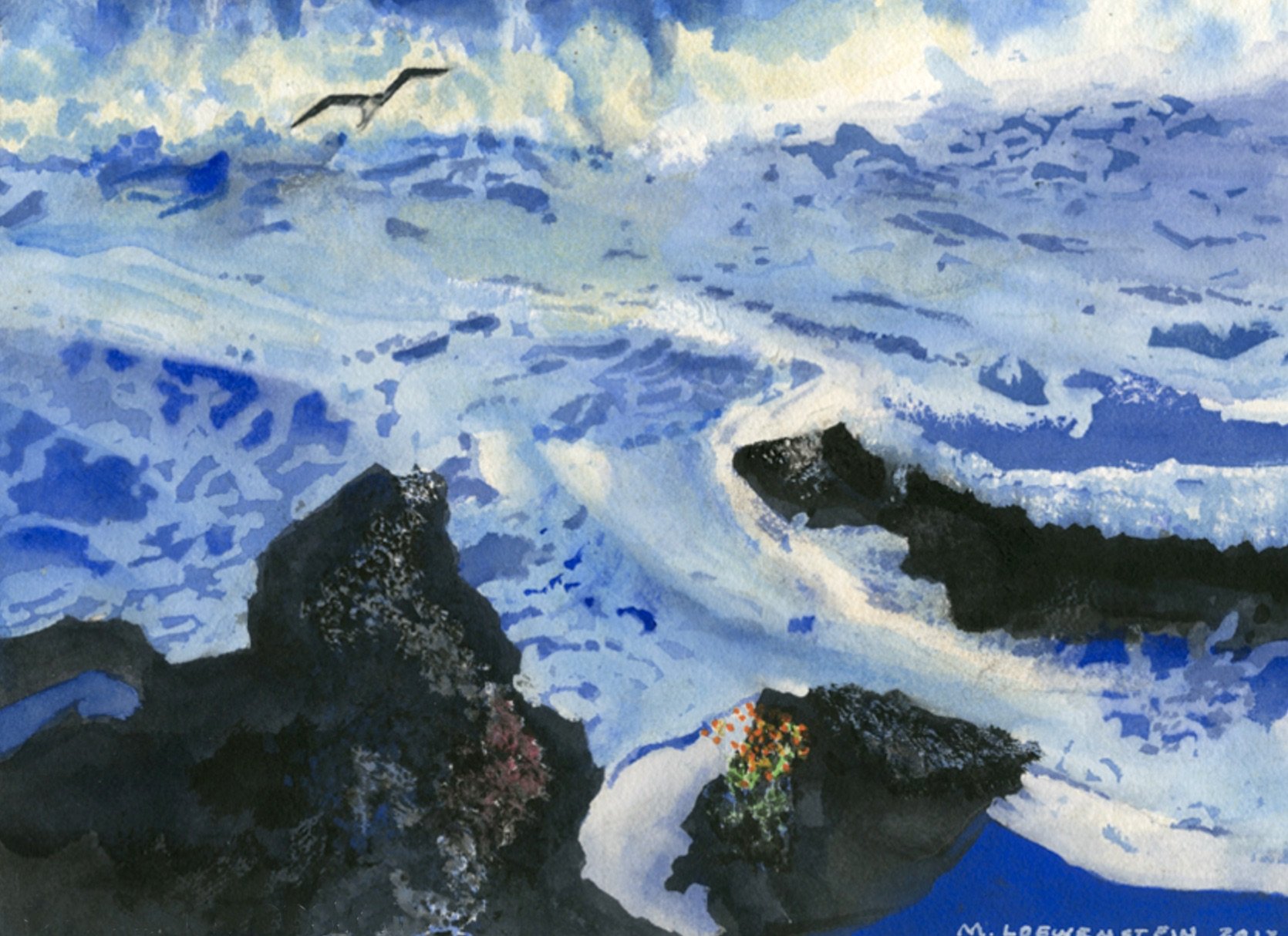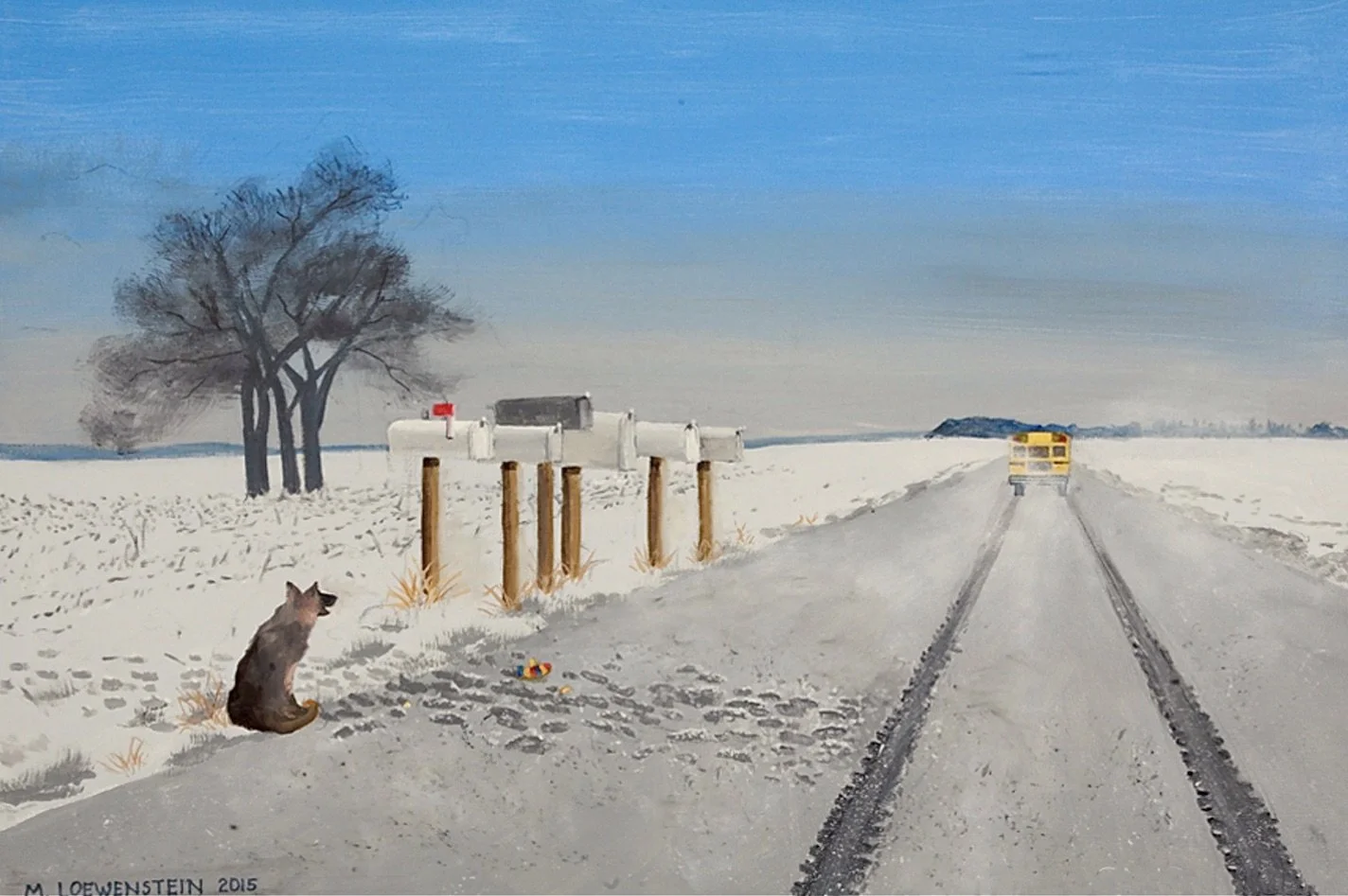(adapted from the eulogy I gave for my Dad on October 19, 2024 at St. Mark’s Episcopal Church in Evanston, IL)
The Hideaway Alone deep in the forest, a young boy maybe nine or ten, unaware of our presence, greets a frog swimming in a pool beside a boulder. He watches captivated as it makes concentric circles in the water, while all around him dappled sunlight coming through the canopy transforms plants, stones and butterflies into colored jewels as it lands upon them.
(This scene is from a painting Dad made in 2015, based I imagine on the kind of place he always talked about - an ideal vision of solitude and wonder and a place he always hoped to return to.)
As long as I can remember, Dad loved a walk in the woods. Any bit of forest with a little wild nature would do. Here in Evanston, there wasn’t much, so on Sunday afternoons Tim, Mom, Dad and I would load into the red and white family Land Cruiser to go to Harms Woods just off of Golf Rd. in Morton Grove. We’d park in the lot, open up the hatchback and have a quick snack before getting onto the narrow trail that would lead us into the forest. Dad’s pace was always slow and deliberate, so deliberate. He’d often pause to point out a flower or rock that caught his eye or cup his ear and shush us as he tried to identify a bird only he could hear. For Tim and I, the hike through the woods was just a way to get to the water (a small canal like branch of the Chicago River) which we imagined was full of frogs, turtles and giant yet uncaught fish.
I discovered more about the source of Dad’s love of wild places a few years ago, when I recorded a long conversation with him, much of which centered on his growing up north of here in Highland Park. In our conversation, he recalled many solitary afternoons exploring the undeveloped wilds around his house, and how being sent to a “Farm School” after an accident that left him with a serious head injury was fortuitous, in a way, as it immersed him in the outdoors while other kids his age were at “inside” school all day.
Back at Harms Woods, Dad wasn’t a birder, hunter, collector or a fisherman. And as he told Tim and I, upon becoming a parent he gave up the mountain climbing of his youth where summitting was the goal. His relationship to nature had evolved, he had become an observant and patient wanderer attuned to each step without counting them and eager to share his love of wild places with his sons.
His appreciation of slowing down and of noticing the beauty and wonder all around us was I think the greatest gift Dad shared with my brother Tim and me, (and one we’ve shared with our sons Jake, Luke and Andrés.) It manifest as we grew older into camping and canoeing adventures culminating at a pristine little lake near the Canadian border called Fenske. I was tasked back then with finding a campgound for our trips from a Triple AAA guidebook and I remember choosing Fenske because it had the fewest campsites, no RV hook-ups and pit toilets, which in my calculation meant it would be a place where only true lovers of the woods and lakes would go. Although it was remote and I’m sure Mom would have chosen a spot with a few more amenities, I was right and we ended up camping there three times as a family followed by trips with friends and an epic adventure with Tim.
The Coast A frothy wave of ocean crashes over a rough, rocky shore, maybe in Maine. The wave is all white boiling foam with just a few patches of blue water. The horizon is mostly obscured by mist and only discernible through a ragged edge of sunlight. Within this swirling of tidal forces a lone seagull hovers, perfectly poised above the tumult, while below a fragile patch of red wildflowers holds onto rock about to be submerged.
In the late 1990’s about the time Dad was contemplating (begrudgingly) a transition from WTTW (the PBS television station in Chicago), he began to paint. He started with watercolors, making studies of flowers and forest paths. I remember him being serious and committed to learning the proper technique, often referring to books he’d checked out from the library for tips. It seemed heavy, burdened by the need to paint correctly, but after a 40-year career devoted to collaboration where his art was always in the service of a director’s vision, he was finally getting to express himself without compromise.
Dad continued to paint in his basement studio in Evanston and gradually his work took on new life, as he began infusing his paintings with characters and little bits of narrative. No longer was his work just about technique, now he was making stories. At first the characters in his paintings were animals: a bird, a cat or a dog were added usually in the middle-foreground, like the figures he would insert into a set design model to show scale. In one watercolor, a cat with its tail at attention wanders up a country road toward the crest of a hill to greet, we assume, something or someone approaching; while in another, a floppy eared hound, at a small-town intersection, gestures toward us as if to say, “Look…”
Gradually, as he gained confidence he told me, the anthropocentrism of his animal characters gave way, and the figures became people - most often boys of the age he was when growing up in Highland Park. When I saw these new works, I felt instantly that they were self-portraits. These paintings were like sets for the stories of his youth and the dreams he’d known. Unencumbered by the requirements of producing someone else’s tv show, he was now the writer, director and set designer of his own vision.
The Long Goodbye Under a cold blue sky, a yellow school bus speeds away from us down a snow-covered country road. In the foreground, a row of rural mailboxes and a pet German shepherd stand in the place where the bus has just picked up its student passenger. Left behind amidst footprints in the slushy snow and a dropped mitten, a boy’s best friend watches, hoping for a safe journey and looking forward to his return.


